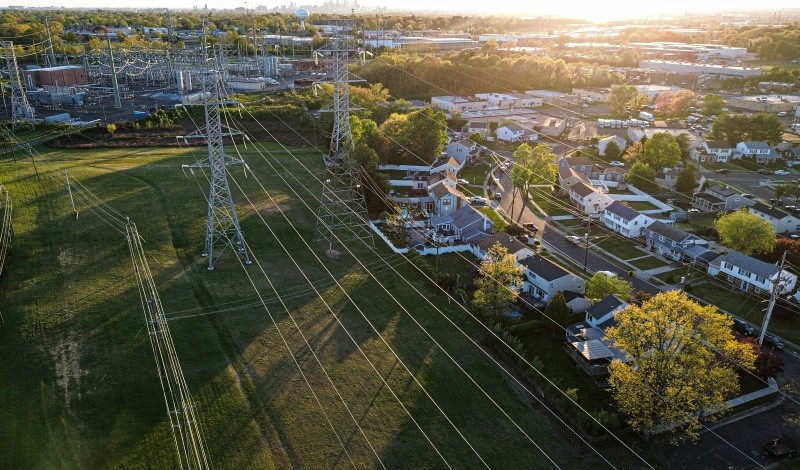
Scholar argues that outsourcing electricity market design hinders government climate and reliability efforts.
In 2021, President Joseph R. Biden set a national goal of 100 percent carbon-free electricity by 2035. This ambitious goal requires a significant shift in power production to renewable sources and the construction of thousands of miles of new electric transmission lines.
This target will necessitate support from numerous regulatory policies, including the implementation of carbon pricing, subsidies for clean energy, and liability rules for utilities that fail to meet climate mandates. These policies must align utilities’ financial incentives with the cost of producing electric power. But what if these incentives are insufficient to spur utilities’ investment in renewable energy?
In a recent article, Joshua C. Macey of Yale Law School challenges the assumption that privately owned electric utilities will reduce carbon-intensive energy consumption due to regulation. Instead, Macey argues that a fundamental shift in the electricity market structure is required to increase the effectiveness of climate and reliability policies.
The U.S. electric grid, Macey notes, has been described by commentators as “the most complex machine ever made.” Macey identifies four key steps in the electricity supply chain that create this complex machine.
First, fuel is acquired through fossil fuels, such as coal or natural gas, or renewable energy, such as solar radiation. This process, Macey notes, can be elaborate and complex on its own. Second, electricity is generated from the fuel. Third, the electricity is transmitted over large distances from the generation facilities to consumers. Finally, the distribution system reduces the electricity voltage, making it safe for consumer consumption.
The most common energy market structure involves a regional transmission organization (RTO), member-owned nonprofits that run energy market auctions, oversee planning and cost allocation, and operate transmission lines.
Macey explains that RTOs use a process called “merit order dispatch” to meet energy demands. Generators submit bids that represent the price of their energy, and the grid operators select the cheapest bids until a region’s energy is met.
This process, however, is vulnerable to abuse. Macey observes that “scarcity events”—winter storms or heat waves that increase energy demand—lead to high energy market bids that must be accepted to meet demand. Market manipulation—when utilities withhold energy supplies to elevate prices—also presents regulatory challenges.
Macey argues that the RTO dispatch process is only the beginning of what he calls “market incompleteness”—a condition in which it is impossible for market participants to manage risk due to a lack of market to trade within—in the electricity market. For instance, utilities occasionally use filing rights—the right to determine which resources are invested in and the terms and conditions of electricity sales—to protect their investments through rules that counteract climate policies. Utilities also make investments that exploit gaps between state and federal regulations. These investments undermine federal regulations aimed at improving reliability and meeting decarbonization goals.
Macey also explains that utilities strongly influence decision-making processes that disfavor clean energy resource investment. For example, Macey highlights that some RTOs have developed a “minimum offer price rule” that sets a minimum bid amount for certain resources. These price rules can exclude renewables from energy markets, a design choice that benefits existing utilities.
In addition to influencing the energy generation process, Macey notes that utilities use their filing rights to undermine electricity transmission reforms. Since renewable wind and solar resources are often located far from demand centers, the federal planning process and state siting laws favor incumbent utilities and disincentivize the transmission projects necessary to carry these resources across the country.
These utility-favoring market features, Macey argues, result in the cost of regulations that govern reliability and climate improvements being passed by utilities onto their captive ratepayers—reducing the effectiveness of these regulations.
Macey offers several substantive reforms to address the problem of incompleteness in the U.S. electricity market.
To start, Macey proposes that grid governance should be reformed in two ways. First, RTOs and public utility commissions should have better representation from the people they serve—either through public ownership of RTOs or representative boards. Second, agency oversight should be improved through robust public disclosure requirements. Macey suggests that these changes would reduce rules that “favor incumbent fossil resources.”
Macey also notes that transmission owners should divest themselves from generation affiliates. This divestment suggestion is part of Macey’s proposed strategy to make it more difficult for utilities to pass their regulatory compliance costs to captive ratepayers.
Another potential reform, Macey suggests, is to increase the administrative agency capacity—both in state utility commissions and the Federal Energy Regulatory Commission—to ensure that public utilities are supervised and “zealously” regulated.
These reforms, Macey acknowledges, will require regulators to take a “more proactive role” in designing electricity markets. But Macey concludes by reiterating that such reforms are essential to improve the effectiveness of climate and reliability policies and ensure that utilities invest in renewable energy.



